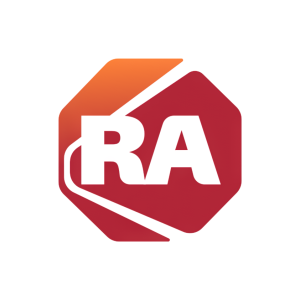Welcome to our dedicated page for Rockwell Automat SEC filings (Ticker: ROK), a comprehensive resource for investors and traders seeking official regulatory documents including 10-K annual reports, 10-Q quarterly earnings, 8-K material events, and insider trading forms.
Rockwell Automation鈥檚 300-page disclosures weave together servo drives, industrial IoT software, and multi-year service contracts鈥攄etails that can overwhelm even seasoned analysts. When you need to locate segment margins or track how supply-chain risks affect backlog, searching through each 10-K, 10-Q, or 8-K can feel like deciphering an engineering manual.
Stock Titan鈥檚 AI removes that friction. Our platform surfaces every Rockwell Automation insider trading Form 4 transactions the moment they reach EDGAR, delivers real-time alerts for Rockwell Automation Form 4 insider transactions real-time, and converts dense accounting footnotes into plain language. Whether you are scanning a Rockwell Automation quarterly earnings report 10-Q filing, exploring a Rockwell Automation proxy statement executive compensation table, or asking 鈥渦nderstanding Rockwell Automation SEC documents with AI,鈥� our summaries highlight the metrics that move capital spending and free cash flow. Need to assess a sudden plant shutdown? The Rockwell Automation 8-K material events explained module flags material event triggers and contextualizes impact on each business segment.
Beyond speed, we connect filing types to what truly matters for this automation leader. The Rockwell Automation annual report 10-K simplified view breaks out Intelligent Devices versus Software & Control revenue, while our Rockwell Automation earnings report filing analysis charts book-to-bill trends across cyclical end-markets. For corporate-governance watchers, Rockwell Automation executive stock transactions Form 4 and historical grants are paired with performance metrics, helping you spot alignment鈥攐r misalignment鈥攚ith shareholders. From raw PDFs to actionable insights, every Rockwell Automation SEC filings explained simply page is updated in seconds, giving you more time to focus on decisions instead of document hunting.
T. Rowe Price Associates, Inc. reports beneficial ownership of 4,997,025 shares of Rockwell Automation common stock, equal to 4.4% of the class. The filing shows sole voting power for 4,722,542 shares and sole dispositive power for 4,985,165 shares, with no shared voting or dispositive powers. The filer is identified as an investment adviser (IA) and certifies the securities are held in the ordinary course of business and not to influence control. No subsidiaries, groups, or holdings on behalf of another person are reported.
Rockwell Automation (ROK) reported Q3 FY25 results (three months ended 30 Jun 2025) that show modest top-line growth but strong earnings leverage. Quarterly sales rose 4.5% YoY to $2.14 bn, driven by a 22.6% jump in Software & Control revenue while Intelligent Devices was flat and Lifecycle Services fell 5.9%. Gross profit increased 10% to $876 m, lifting gross margin 200 bp to 40.8%. Tight cost control kept SG&A slightly lower, expanding operating leverage: segment operating earnings climbed 6.6% to $454 m.
Net income attributable to ROK advanced 27% to $295 m; diluted EPS reached $2.60 versus $2.02. The effective tax rate normalised to 14.3% (prior-year 9.4%). Nine-month free cash flow surged to roughly $953 m (CFO $1.09 bn less capex $137 m), up from $272 m, reflecting working-capital improvements.
The balance sheet shows $495 m cash and $3.46 bn equity. Debt increased: short-term borrowings rose to $846 m and a new $500 m 364-day term loan lifted total debt to $2.62 bn. Inventory fell 3% YoY to $1.25 bn. The company repurchased $356 m of stock YTD and retired 40 m treasury shares, reducing shares outstanding to 112.4 m.
Segment highlights:
- Software & Control: sales +22.6%, operating earnings +64.5% to $199 m (margin ~31.7%).
- Intelligent Devices: sales +1.1%, earnings -5.7% to $182 m.
- Lifecycle Services: sales -5.9%, earnings -34.8% to $73 m.
Management continues to execute on cost-optimisation initiatives begun in FY24 (remaining accrual $34 m) and is assessing impacts of the newly enacted OBBBA tax law. No material litigation or impairment issues were noted.


